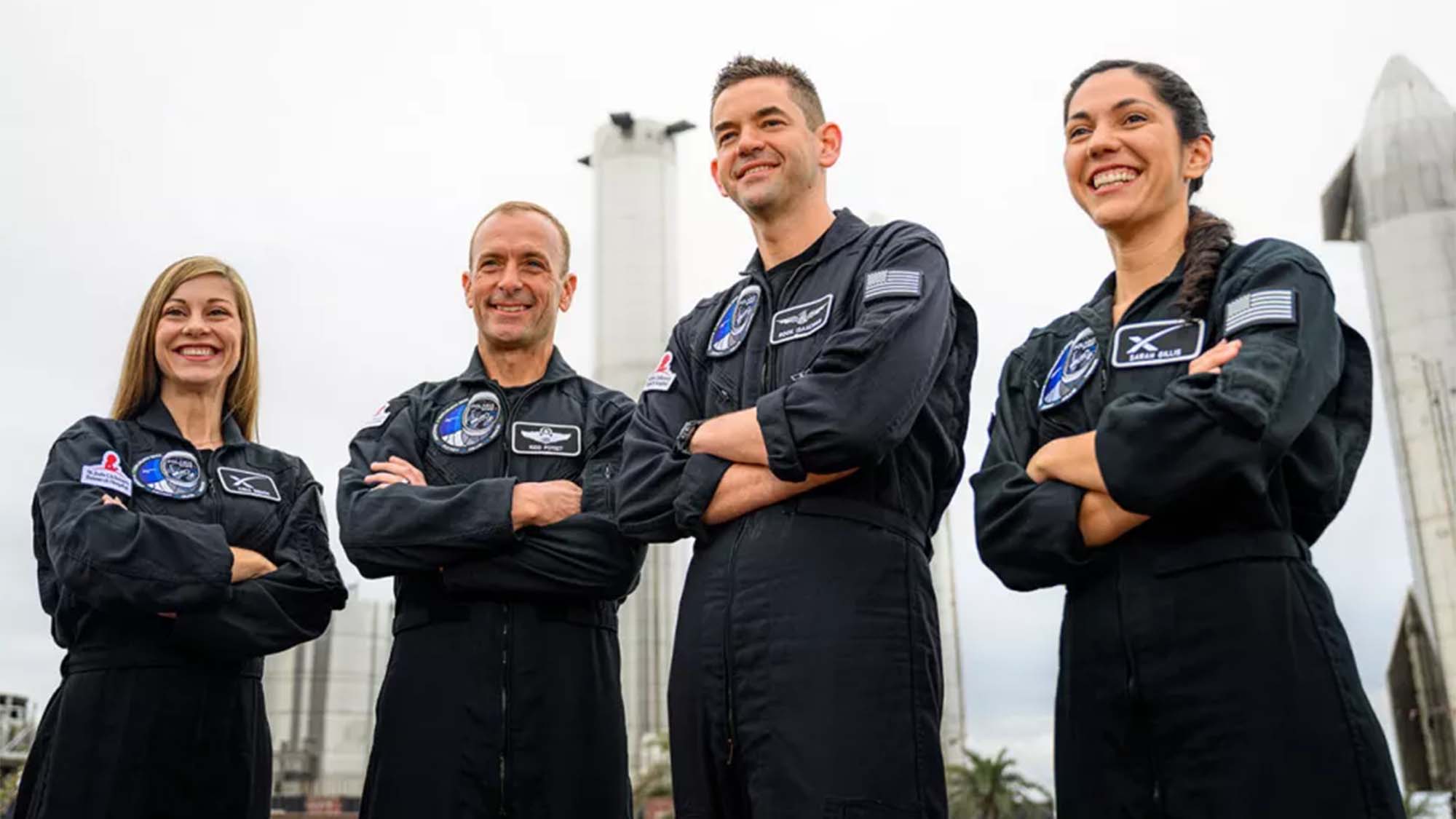Billionaire prepared to pay his way again on SpaceX Dragon and the first Starship crew
Billionaire Jared Isaacman is funding three more SpaceX missions

Billionaire Jared Isaacman apparently hasn't gotten enough of space with last year's Inpiration4 mission. He's agreed to underwrite three more SpaceX flights – including the first crewed Starship mission – under the banner of the "Polaris Program."
Isaacman, who funded and commanded the Inspiration4 mission aboard a modified SpaceX Dragon Crew capsule, is set to command the first of three missions dubbed "Polaris Dawn."
This initial mission is set to include the first-ever private spacewalk by at least two Polaris Dawn crew, according to our colleagues over at Space, and is also aiming to break the record for highest orbital altitude.
"On Polaris Dawn, we endeavor to achieve the highest Earth orbit ever flown," Isaacman said.
Currently, the record for highest Earth orbit ever achieved by humans is held by Gemini 11 astronauts Charles Conrad and Richard Gordon, who orbited Earth at a height of 853 miles/1,373 kilometers in 1966.
The Polaris Dawn crew has already been named, and includes Isaacman; pilot Scott "Kidd" Poteet, a retired U.S. Air Force lieutenant colonel who was Inspiration4's mission director; mission specialist Sarah Gillis who oversees the astronaut training program for SpaceX; and medical officer Anna Menon, a SpaceX crew operations manager.
The upcoming spacewalk definitely pushes the safety envelope for civilian space operations. Generally, spacewalks are performed by seasoned astronauts who sometimes train for years for such endeavors. Isaacman's Polaris Dawn spacewalkers (Isaacman will almost certainly be one of them) will have a little less than a year to prepare.
Get daily insight, inspiration and deals in your inbox
Sign up for breaking news, reviews, opinion, top tech deals, and more.
Granted, they aren't likely to spend several hours outside the International Space Station making repairs, but it is hardly a riskless activity. What's more, the Dragon capsule doesn't have an airlock, so the entire capsule will have to be depressurized for the duration of the spacewalk.
SpaceX also has to up its game for the mission, since it's current pressure suits are not certified for operations in the hard vacuum of outer space, and so new suits will need to be designed for the purpose.

Analysis: You can't get to space without money
While it's easy to look at Polaris Dawn as just the latest installment of the Billionaire Space Race (and that's not entirely inaccurate), the first movers of any commercialization effort are always going to be the people who have the money to fund these kinds of efforts.
And while SpaceX has done an admirable job of reducing the cost of spaceflight, it still isn't cheap by any stretch. For better or for worse, this is what the commercialization of space is going to look like for now.
It will likely be decades before space becomes accessible to the rest of us, if ever, but if that time ever does arrive, this is one way that we could conceivably get there. Whether this is the best use of humanity's finite resources is another question, but it's Isaacman's money, and you honestly can't blame the guy for wanting to go back up if given the chance.

John (He/Him) is the Components Editor here at TechRadar and he is also a programmer, gamer, activist, and Brooklyn College alum currently living in Brooklyn, NY.
Named by the CTA as a CES 2020 Media Trailblazer for his science and technology reporting, John specializes in all areas of computer science, including industry news, hardware reviews, PC gaming, as well as general science writing and the social impact of the tech industry.
You can find him online on Bluesky @johnloeffler.bsky.social